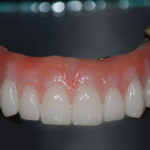Dental cavity filling for children is a common dental procedure to repair a cavity and prevent further decay. It involves removing the decayed part of the tooth and filling the space with a filling material to restore the tooth’s function.
Cavities in children’s teeth are a common concern for parents and are often treated with dental cavity filling. This procedure is crucial in preventing further damage to the tooth and maintaining the child’s dental health. By addressing cavities early on, children can avoid complications and discomfort associated with advanced tooth decay.
Additionally, dental cavity filling for children is performed using materials that are safe and compatible with growing teeth, ensuring the restoration of a healthy smile.
Credit: kidsworldpediatricdental.com
Why Dental Cavity Filling Is Important
Dental cavity filling is crucial for children for two main reasons:
- Protecting the tooth from decay: When a cavity forms in a child’s tooth, it must be filled to prevent further damage. The filling material helps to restore the tooth’s structure and strength, ensuring it can function properly.
- Preventing the spread of infection: Cavities are caused by bacteria that eat away at the tooth’s enamel and cause decay. If left untreated, the infection can spread to the surrounding teeth and gums, leading to more serious oral health issues.
Dental cavity filling involves a few steps:
- First, the dentist will numb the area around the tooth using local anesthesia to ensure a painless procedure.
- Next, the decayed portion of the tooth will be removed using specialized dental tools.
- Afterward, the cavity will be filled with a suitable material such as amalgam or composite resin.
- Lastly, the filling will be shaped and polished to restore the tooth’s natural appearance and functionality.
Regular visits to the dentist and good oral hygiene practices, including brushing and flossing, can help prevent cavities in children. However, if a cavity does develop, prompt cavity filling is essential to protect the tooth from further decay and prevent the spread of infection.
Types Of Dental Cavity Fillings
Dental Cavity Filling for Children
Dental cavity fillings for children come in various types, each with its own pros and cons.
Amalgam fillings are a durable option made from a blend of metals, but they are noticeable.
Composite fillings, on the other hand, blend in with the natural tooth color, making them less visible.
Glass ionomer fillings release fluoride, which can help prevent further decay, but are less durable.
When choosing the right filling for your child, consider the location of the cavity and consult with a pediatric dentist.
Choosing The Right Dental Cavity Filling For Children
Dental cavity filling for children is an important dental procedure that requires consideration of various factors. It is crucial to choose the right type of filling based on the tooth location, as the location can impact the durability and effectiveness of the filling. Evaluating the child’s dental hygiene is essential to determine the most suitable filling material that will promote oral health. Additionally, considering the child’s age is important, as younger children may require different filling materials compared to older children. Ultimately, selecting the right dental cavity filling for children involves a comprehensive assessment of these factors to ensure the best possible outcome for the child’s dental health.
Credit: childdentistmorristown.com
The Dental Cavity Filling Procedure For Children
In order to make dental cavity filling a comfortable experience for children, a thorough process is followed.
Administering Anesthesia: Firstly, anesthesia is administered to ensure the child feels no pain during the procedure.
Removing the Decay: Next, the decay is carefully removed from the tooth using special tools, leaving behind a clean surface.
Preparing the Tooth for Filling: The dentist then prepares the tooth by etching its surface with a gentle solution, allowing the filling to securely bond.
Placing the Filling: A filling material, such as composite resin, is applied to the prepared tooth, carefully shaping it to match the natural tooth structure.
Checking the Bite: Finally, the dentist ensures the bite is aligned and comfortable for the child, making any necessary adjustments to ensure proper function.
Regular dental check-ups are crucial to maintain good oral health for children. Dental cavity filling helps to restore the strength and function of decayed teeth, allowing kids to enjoy a healthy smile.
Caring For Dental Fillings In Children
Dental cavity filling is a common dental procedure for children. Caring for dental fillings is important to ensure their longevity and maintain good oral health. Good oral hygiene practices play a crucial role in the care of dental fillings. Brushing teeth twice a day with a fluoride toothpaste and flossing daily are essential to remove plaque and prevent tooth decay. Limiting sugary and acidic foods is also important as they can contribute to the breakdown of fillings. Encouraging a healthy diet rich in fruits, vegetables, and dairy products is beneficial for dental fillings and overall oral health. Additionally, scheduling regular dental check-ups is vital to identify any issues with the fillings and address them promptly. By following these guidelines, parents can ensure proper care for their child’s dental fillings.
Credit: www.kidsdentalonline.com
Frequently Asked Questions On Dental Cavity Filling For Children
How Is Dental Cavity Filling Done For Children?
Dental cavity filling for children involves removing decayed tooth material and placing a filling to restore the tooth’s shape and function. The dentist will numb the area, remove the decay, and fill the cavity using a composite resin material that matches the tooth’s color.
This procedure helps prevent further decay and restore the tooth’s health.
What Is The Best Age For Children To Get Dental Cavity Filling?
The best age for children to get dental cavity filling depends on the severity of the cavity and the child’s ability to cooperate during the procedure. In general, children around the age of 5 or 6 are more likely to sit still and follow instructions, making it easier for the dentist to perform the filling.
However, every child is different, and the dentist will assess their individual needs before recommending the procedure.
Is Dental Cavity Filling A Painful Procedure For Children?
The dental cavity filling procedure for children is usually not painful. Before starting, the dentist will apply a local anesthetic to numb the area, ensuring that the child doesn’t feel any pain during the procedure. Children may experience some pressure or discomfort, but it should not be painful.
Dentists take extra care to ensure the child’s comfort and minimize any discomfort during the process.
How Long Does A Dental Cavity Filling Last In Children?
The longevity of a dental cavity filling in children depends on several factors, including the type of filling material used, oral hygiene practices, and dietary habits. On average, tooth-colored composite fillings can last between 5 and 10 years in children.
Regular dental check-ups, proper oral hygiene, and a healthy diet can help extend the lifespan of the filling.
Conclusion
Cavity fillings for children play a crucial role in maintaining their dental health. By addressing cavities early on, parents can prevent further decay and future dental complications. With advancements in dental technology and techniques, cavity treatments have become more comfortable and efficient for children.
Regular dental visits and good oral hygiene practices will help children maintain a healthy smile and overall well-being. Emphasizing preventive measures and early intervention can effectively reduce the need for extensive dental treatments later in life.














